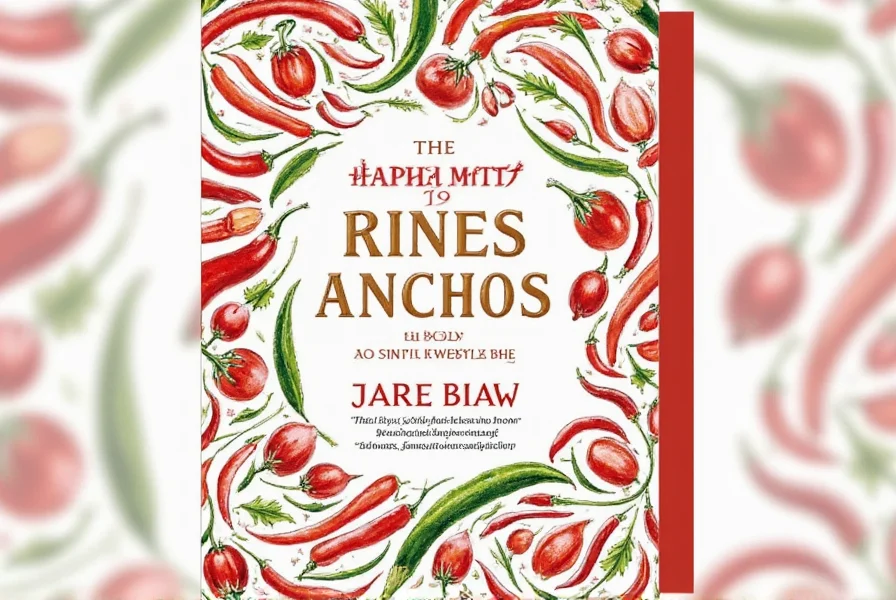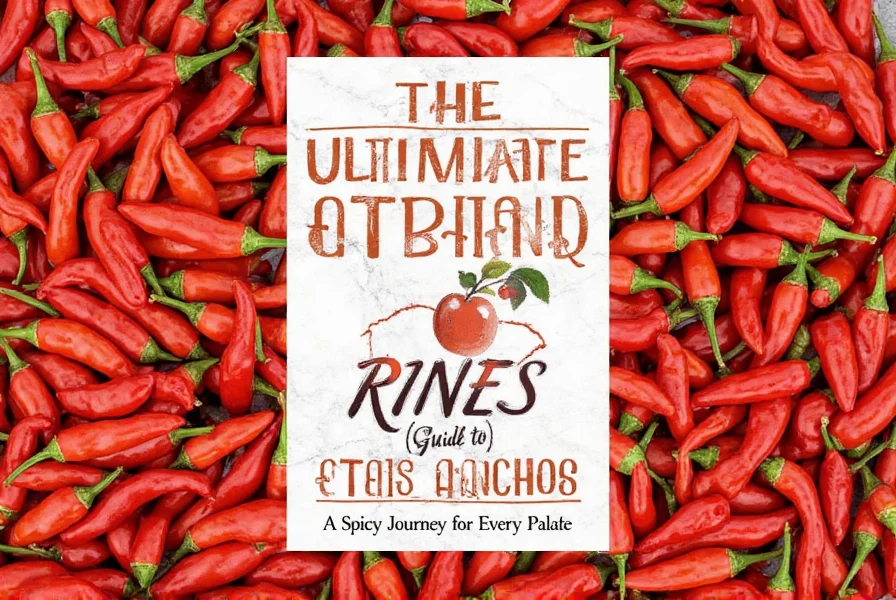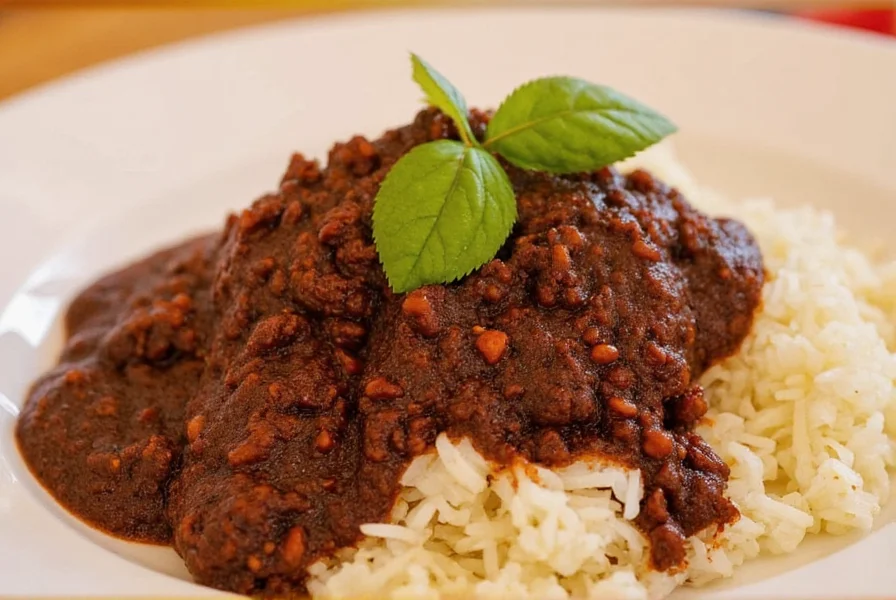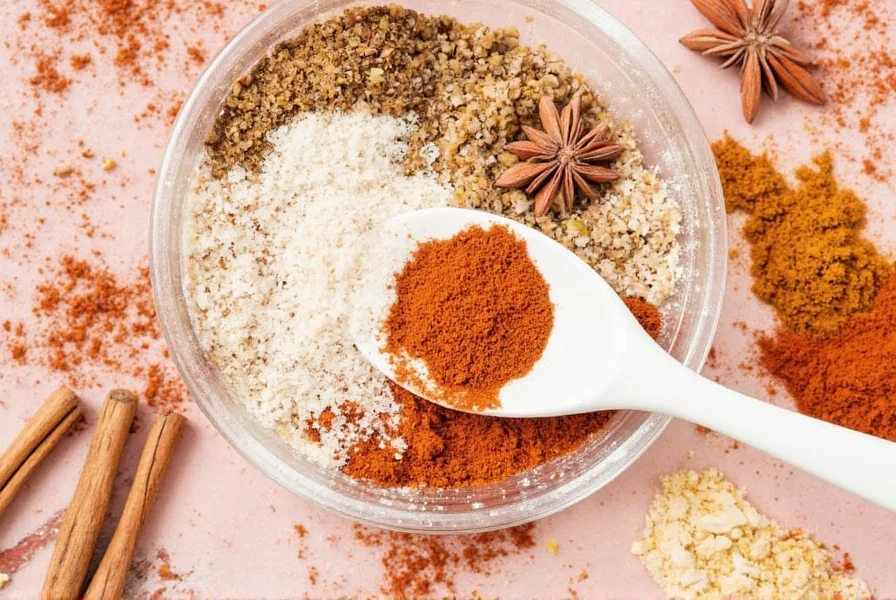Table of Contents
What Are Ancho Chilies?
You may have searched for 'rines anchos', but this is a common misspelling. The correct term is 'ancho chilies' (also known as dried poblano peppers). Ancho chilies are a staple in Mexican cuisine, known for their deep red color, mild heat (1,000-1,500 Scoville units), and rich, smoky-sweet flavor profile. They're perfect for adding depth to sauces, stews, and rubs without overwhelming heat.

These chilies are made from fully ripened poblano peppers that are dried. They're widely used in traditional Mexican dishes like mole sauces, enchiladas, and tamales. Their versatility makes them a must-have for home cooks looking to add authentic flavor to their meals.
Spice Level and Flavor Profile
Ancho chilies have a mild to medium heat level, ranging from 1,000 to 1,500 Scoville units. This makes them significantly milder than jalapeños (2,500-8,000 SHU) and much milder than habaneros (100,000-350,000 SHU). Their flavor profile is rich and complex, offering a blend of sweetness, earthiness, and a hint of fruitiness.

One of the key characteristics of ancho chilies is their ability to enhance the flavor of a dish without overpowering it. They are often used in salsas, moles, and stews, where their subtle heat and deep flavor can shine through. If you're looking to add a little kick to your cooking without going overboard, ancho chilies are an excellent choice.
How to Use Ancho Chilies
Using ancho chilies is simple and straightforward. Whether you're a seasoned chef or a home cook, there are several ways to incorporate these chilies into your meals:
- Rehydrate and Blend: Soak the dried chilies in warm water for about 30 minutes until they become soft. Then, blend them into a paste or sauce.
- Add to Sauces: Use them in traditional Mexican sauces like mole or enchilada sauce for added depth and flavor.
- Use in Stews: Add them to soups and stews for a warm, smoky undertone.
- Make a Seasoning Rub: Crush the chilies and mix them with other spices to create a flavorful rub for meats or vegetables.

One of the best things about ancho chilies is their versatility. You can use them in both hot and cold dishes, and they work well with a variety of ingredients. Just remember to adjust the quantity based on your desired heat level and flavor intensity.
Cooking Recipes with Ancho Chilies
If you're ready to get creative in the kitchen, here are a few recipes that showcase the unique qualities of ancho chilies:
Classic Ancho Chile Sauce
This sauce is perfect for drizzling over tacos, enchiladas, or grilled meats. Here's how to make it:
- Soak 6 dried ancho chilies in warm water for 30 minutes.
- Remove the stems and seeds, then blend the chilies with 1 cup of broth, 1 clove of garlic, and a pinch of salt.
- Simmer the mixture for 10 minutes, then let it cool before serving.
Ancho Chicken Tacos
These tacos are a delicious way to enjoy the flavors of ancho chilies. Simply marinate chicken in a mixture of ancho chili paste, lime juice, and spices, then grill and serve in warm tortillas.

For a more adventurous twist, try using ancho chilies in a spicy bean soup or a rich chocolate mole sauce. The possibilities are endless!
Buying Guide for Ancho Chilies
When purchasing ancho chilies, it's important to choose high-quality chilies that will deliver the best flavor and heat. Here are some tips to help you make the right choice:
- Look for Dried Chilies: Fresh ancho chilies are rare, so opt for dried ones that are plump and have a deep red color.
- Check for Freshness: Avoid chilies that are brittle or have a musty smell, as they may be old or improperly stored.
- Consider the Origin: Some chilies are grown in specific regions and may have distinct flavor profiles. For example, Mexican ancho chilies are known for their rich, smoky taste.
- Buy in Bulk: If you plan to use ancho chilies frequently, consider buying in bulk to save money and ensure you always have them on hand.

When it comes to products, there are several brands that offer high-quality ancho chilies. One popular option is the Organic Ancho Chili Powder, which is made from 100% organic chilies and has a mild to medium heat level. It's ideal for those who want to add flavor without too much heat. Another great choice is the Smoked Ancho Chili Flakes, which are perfect for seasoning dishes with a smoky, spicy kick.
These products are suitable for a wide range of users, from amateur cooks looking to experiment with new flavors to professional chefs who want to elevate their dishes. They can be used in a variety of occasions, from casual family dinners to special events and parties.
A sentence that expands on the ancho chilies is: Ancho chilies bring a unique blend of heat and flavor that can transform any dish, making them a valuable addition to every spice rack.
Common Mistakes to Avoid
Even the most experienced cooks can make mistakes when working with ancho chilies. Here are a few common pitfalls to watch out for:
- Overusing the Chilies: While ancho chilies are mild, using too many can overwhelm the dish and mask other flavors.
- Not Rehydrating Properly: If you're using dried chilies, make sure to soak them long enough to soften them before blending or cooking.
- Ignoring the Heat Level: Don't assume all ancho chilies are the same. Some may be hotter than others, so it's wise to start with a small amount and adjust as needed.
By avoiding these mistakes, you can make the most of your ancho chilies and enjoy their full flavor potential.
Frequently Asked Questions
What exactly are ancho chilies?
Ancho chilies are dried poblano peppers that have been allowed to ripen to a deep red color before drying. They are a staple in Mexican cuisine, known for their deep red color, mild heat (1,000-1,500 Scoville units), and rich, smoky-sweet flavor profile.
Is 'rines anchos' the same as ancho chilies?
Yes, 'rines anchos' is a common misspelling or mishearing of 'ancho chilies'. The term 'rines' does not exist in standard culinary terminology. Ancho chilies are specifically dried poblano peppers and are widely used in Mexican cooking.
How spicy are ancho chilies compared to other chilies?
Ancho chilies have a mild to medium heat level, ranging from 1,000 to 1,500 Scoville Heat Units. They're significantly milder than jalapeños (2,500-8,000 SHU) and much milder than habaneros (100,000-350,000 SHU). Their heat is subtle and balanced by sweet, fruity, and smoky notes, making them approachable for those who don't typically enjoy spicy foods.
How should I store ancho chilies to keep them fresh?
Dried ancho chilies should be stored in an airtight container in a cool, dark place. Properly stored, they can maintain their flavor for 6-12 months. For longer storage, you can keep them in the freezer where they'll retain quality for up to 2 years. Ground ancho chili powder has a shorter shelf life (about 6 months) as the grinding process exposes more surface area to air.
Can I substitute ancho chilies with other chilies if I can't find them?
Yes, if you can't find ancho chilies, good substitutes include guajillo chilies (for similar mild heat and tangy flavor), pasilla chilies (for earthy notes), or even a combination of paprika and a small amount of cayenne for the heat. For recipes calling for ancho chili powder, you could use mild paprika with a pinch of cumin and a tiny bit of cayenne.
What are the best dishes to use ancho chilies in?
Ancho chilies work wonderfully in moles, enchilada sauces, tamales, chili con carne, and barbecue rubs. They're excellent in chocolate-based sauces (mole poblano), bean dishes, soups, stews, and even in some sweet applications where a subtle warmth is desired. Their sweet, smoky flavor pairs well with meats, especially pork and chicken, as well as with sweet vegetables like sweet potatoes.
How do I properly rehydrate ancho chilies for cooking?
To rehydrate ancho chilies, remove stems and seeds, then soak them in hot water for 20-30 minutes until softened. For enhanced flavor, you can soak them in broth, beer, or orange juice instead of water. Don't use boiling water as it can make the chilies mushy. After soaking, they should be pliable enough to blend into sauces or use in recipes.
Are there any health benefits to using ancho chilies?
Yes, like most chili peppers, ancho chilies contain capsaicin, which has anti-inflammatory properties and may help boost metabolism. They're also rich in vitamins A and C, as well as antioxidants. The vitamin A content supports eye health, while the capsaicin may help with pain relief and cardiovascular health when consumed regularly in moderation.
Conclusion
Ancho chilies are a fantastic addition to any kitchen, offering a balance of heat and flavor that can elevate your cooking. Whether you're making a classic sauce or experimenting with new recipes, these chilies provide a versatile and delicious option. With the right techniques and a little creativity, you can unlock the full potential of ancho chilies and enjoy the unique experience they bring to your meals.

So next time you're in the mood for something a little spicy, reach for your ancho chilies and let your taste buds embark on a flavorful journey. Happy cooking!










 浙公网安备
33010002000092号
浙公网安备
33010002000092号 浙B2-20120091-4
浙B2-20120091-4